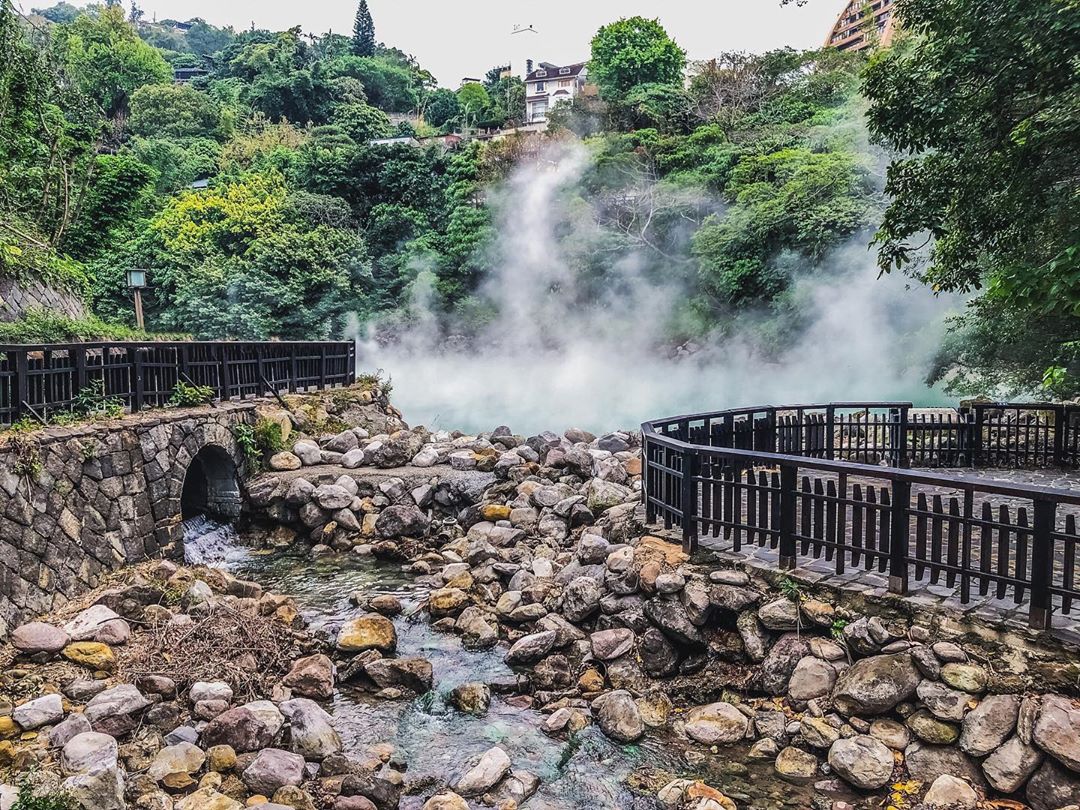Known for their street food and night markets, Taiwan is also famous for their hot springs, which are said to have a plethora of health benefits — such as raising one’s energy levels, and treating chronic fatigue, eczema, and arthritis.
Hot springs have been a large part of Taiwanese culture since the 1800s, when Taiwan was under Japanese rule. During their rule, the government in charge developed the hot springs on the peninsula, with many influences from the Japanese onsen culture. The first hot spring hotel was opened in Taiwan in 1896, by Hirado Gengo; this paved the way for the development of hot spring culture. Fast forward to today, Taiwan now has more than 100 hot springs — one of the most in the world. Additionally, it has also been dubbed the “Hot Spring Kingdom”, and is ranked among the top 15 hot spring destinations in the world.
The most accessible hot spring from Taipei City would be Beitou, which is easily accessible via MRT, with a journey that takes approximately an hour. Since the 1970s and 1980s, many hotels and resorts have been developed in the area as well.
Here’s how to get to Beitou:
- Take the Red Line to Beitou Station
- At Beitou Station, transfer to the pink line and alight at Xinbeitou Station
The hot springs and other interesting tourist attractions are a mere 5 minute walk away from the MRT station, so there’s no worry of getting lost. Alternatively, visitors may also opt to take a taxi, which would take about 30 to 40 minutes, depending on traffic conditions.
Beitou not only has many hot spring resorts that cater to various price points, but is also home to a Hot Spring Museum, which provides visitors the origins of hot spring culture in Taiwan. What’s interesting about the museum is that the building is a restored Japanese colonial-era bathhouse which gives visitors a comprehensive introduction to hot springs in Beitou — a perfect way to learn about hot springs before (or after) experiencing it!
At Beitou, the dormant Datun volcano provides Beitou with an infinite supply of thermal waters, and the area is surrounded with resorts across all price points to suit tourists’ varying budgets. First time visitors usually opt for the well-known public hot spring, located near the Hot Spring Museum.
In Beitou, there are three main types of hot springs:
Green Sulfur Hot Spring
This type of hot spring has a high concentration of sulfur, and its colour is reminiscent of jade. It is the hottest out of the three, with temperatures ranging from 50 to 75 degree celsius. What makes this particular type of hot spring so highly sought after is its rarity—it can only be found in Beitou and Akita, Japan! Many believe that the green sulfur hot spring is useful in treating skin diseases, gout, rheumatism, and fatigue.
Red Iron (Ferrous) Hot Spring
Unlike the green sulfur, this hot spring’s water is clear, and has a slightly lower temperature of between 40 to 60 degrees Celsius. It is believed to relieve nerve strain and inflammation.
White Sulfur Hot Spring
Do not be fooled by this hot spring’s creamy and milky appearance — the hydrogen sulfide in it gives off an extremely strong odour, similar to that of rotten eggs! It is also extremely rare, as it is only available in Beitou and the Kansai Region in Japan. Its temperature is the lowest out of the three, at approximately 45°C. This hot spring is typically used to treat ulcers, chronic skin diseases, liver diseases and diabetes.
The most affordable option in Beitou would be the Millennium Hot Spring Bathhouse, which costs NT$40 per entry. Run by the government, this bathhouse has a variety of hot spring pools for visitors to experience a hot spring for themselves. However, a possible downside for some would be the restrictions at the bathhouse. As this is a shared public facility, visitors are required to be dressed in bathing suits. Hot Spring attendants are also constantly walking around the area, which might cause some unease.
For those who would like to have a hot spring experience in private, there are quite a few privately-owned resort establishments in the area. One of the most reputable ones is the Yitsun Hotel, which was built in 1901. Its original name was Xin Nai Tang, but was later changed to its current name in honour or Dr Sun Yat Sen’s given name — Sun Yi Xian — who was believed to have visited this hotel and was impressed by the quality of the hot springs.
Many of the guestrooms at Yitsun are decorated Japanese-style, in honour of Japanese influence on Taiwan’s hot spring culture. The baths are separated by gender — one for males and one for females — and are set in grey slate stone, and are about 60 °C, making them perfect for long dips.
Being one of the hallmarks of Taiwanese tourism, and with such a rich history, Beitou is definitely a destination to add to your travel bucket list!




























